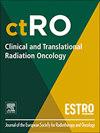Comment on “PSMA response evaluation in follow-up PSMA-PET/CT after stereotactic ablative body radiotherapy (SABR) for oligometastases in prostate cancer”
IF 2.7
3区 医学
Q3 ONCOLOGY
引用次数: 0
Abstract
The recently published study by Zang et al. offers valuable insight into PSMA-PET/CTbased response assessment in patients with oligometastatic prostate cancer (PCa) undergoing stereotactic ablative body radiotherapy (SABR), demonstrating an impressive 5-year local control rate of 86 % and progressive reduction in SUVmax values across follow-up intervals [1]. While the findings reinforce the utility of PSMAPET/CT as a potential biomarker for local tumor control, certain methodological and interpretive issues merit deeper consideration.
关于“立体定向消融体放疗(SABR)治疗前列腺癌寡转移灶后PSMA疗效的随访评价”的评论
Zang等人最近发表的研究为基于PSMA-PET/ ct的低转移性前列腺癌(PCa)患者接受立体定向消融体放疗(SABR)的反应评估提供了有价值的见解,显示了令人印象深刻的5年局部控制率为86%,并且在随访间隔[1]期间SUVmax值逐渐降低。虽然这些发现加强了PSMAPET/CT作为局部肿瘤控制的潜在生物标志物的效用,但某些方法学和解释性问题值得深入考虑。
本文章由计算机程序翻译,如有差异,请以英文原文为准。
求助全文
约1分钟内获得全文
求助全文
来源期刊

Clinical and Translational Radiation Oncology
Medicine-Radiology, Nuclear Medicine and Imaging
CiteScore
5.30
自引率
3.20%
发文量
114
审稿时长
40 days
 求助内容:
求助内容: 应助结果提醒方式:
应助结果提醒方式:


